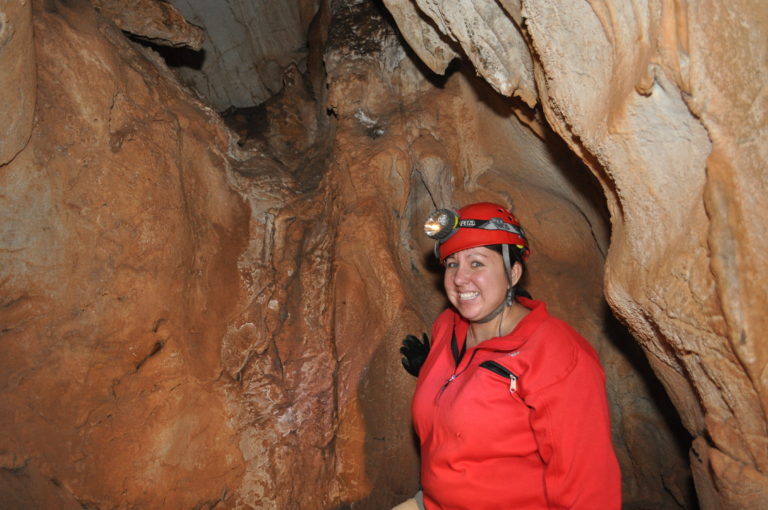NOTE TO EDITORS: PHOTOS AVAILABLE AT
https://news.uci.edu/2020/08/21/uci-and-international-institutions-link-southeast-asia-megadrought-to-drying-in-africa
Irvine, Calif., Aug. 21, 2020 – Physical evidence found in caves in Laos helps tell a story about a connection between the end of the Green Sahara – when once heavily vegetated Northern Africa became a hyper-arid landscape – and a previously unknown megadrought that crippled Southeast Asia 4,000 to 5,000 years ago.
In a paper published today in Nature Communications, scientists at the University of California, Irvine, the University of Pennsylvania, William Paterson University of New Jersey and other international institutions explain how this major climate transformation led to a shift in human settlement patterns in Southeast Asia, which is now inhabited by more than 600 million people.
“In this study, we provide the first proof for a strong link between the end of the Green Sahara and Southeast Asian monsoon failure during the mid- to late Holocene period,” said co-author Kathleen Johnson, UCI associate professor of Earth system science. “Our high-resolution and well-dated record suggests a strong connection between Northern Africa and mainland Southeast Asia during this time.”
Johnson carries her caving gear across a river after exiting a cave in Laos, where she has been conducting paleoclimate research since 2010. Serge Caillault
To create a paleoclimate record for the study, Johnson and other researchers gathered stalagmite samples from caves in Northern Laos. In her UCI laboratory, they measured the geochemical properties of the oxygen and carbon isotopes, carbon-14, and trace metals found in the specimens. This helped them verify the occurrence of the drought and extrapolate its impacts on the region.
Johnson said they combined data from the analysis of these stalagmite-derived proxies with a series of idealized climate model simulations – conducted by co-author Francesco Pausata of the University of Quebec in Montreal – in which Saharan vegetation and dust concentrations were altered in a way that permitted them to investigate the ocean-atmosphere feedbacks and teleconnections associated with such an abrupt shift in precipitation.
The modeling experiments suggested that reduced plant growth in the Sahara led to increased airborne dust that acted to cool the Indian Ocean and shift the Walker circulation pattern eastward, causing it to behave in ways similar to modern-day El Niño events. This, ultimately, led to a large reduction in monsoon moisture across Southeast Asia that lasted more than 1,000 years, according to Johnson.
Anthropologists and archaeologists have previously studied the effects of the demise of the Green Sahara, also known as the African humid period, on population centers closer to Western Asia and North Africa, noting the collapse of the Akkadian Empire of Mesopotamia, the de-urbanization of the Indus Civilization (near present-day Pakistan and India) and the spread of pastoralism along the Nile River.
But the link to the origin of the Southeast Asia megadrought and lifestyle pattern shifts in the region had not been previously investigated, according to lead author Michael Griffiths, professor of environmental science at William Paterson University of New Jersey.
“Archaeologists and anthropologists have been studying this event for decades now, in terms of societal adaptations and upheavals, but its exact cause has eluded the scientific community,” said Griffiths, who was a National Oceanic and Atmospheric Administration-supported postdoctoral scholar in Johnson’s lab and has collaborated with her on this research topic for more than 10 years.
“Results from this work provide a novel and convincing explanation for the origin of the Southeast Asia megadrought and could help us better understand, to varying degrees, the observed societal shifts across many parts of the tropics and extra-tropics,” he said.
The researchers suggest that the centuries-long megadrought corresponds to the “missing millennia” in Southeast Asia between 4,000 and 6,000 years ago, a time characterized by a noticeable lack of archaeological evidence in interior Southeast Asia compared to earlier and later portions of the Holocene.
They propose that the mid-Holocene megadrought may have been an impetus for mass population movements and the adoption of new, more resilient subsistence strategies – and that it should now be considered as a possible driver for the inception of Neolithic farming in mainland Southeast Asia.
“This is outstanding evidence for the type of climate change that must have affected society, what plants were available, what animals were available,” said co-author Joyce White, adjunct professor of anthropology at the University of Pennsylvania. “All of life had to adjust to this very different climate. From an archaeological point of view, this really is a game changer in how we try to understand or reconstruct the middle Holocene period.”
The collection of speleothem samples from Laotian caves was made possible by Johnson’s collaboration since 2010 with the Middle Mekong Archaeological Project, managed by White, a consulting scholar at the University of Pennsylvania Museum of Archaeology and Anthropology. This project, which also involved researchers from Oxford University and Northumbria University in the United Kingdom, Los Alamos National Laboratory, and the University of New Mexico, was funded by the National Science Foundation, NOAA, the Swedish Research Council and a grant from the Henry Luce Foundation to the Penn Museum.
About the University of California, Irvine: Founded in 1965, UCI is the youngest member of the prestigious Association of American Universities. The campus has produced three Nobel laureates and is known for its academic achievement, premier research, innovation and anteater mascot. Led by Chancellor Howard Gillman, UCI has more than 36,000 students and offers 222 degree programs. It’s located in one of the world’s safest and most economically vibrant communities and is Orange County’s second-largest employer, contributing $5 billion annually to the local economy. For more on UCI, visit www.uci.edu.
Media access: Radio programs/stations may, for a fee, use an on-campus ISDN line to interview UCI faculty and experts, subject to availability and university approval. For more UCI news, visit news.uci.edu. Additional resources for journalists may be found at communications.uci.edu/for-journalists.
